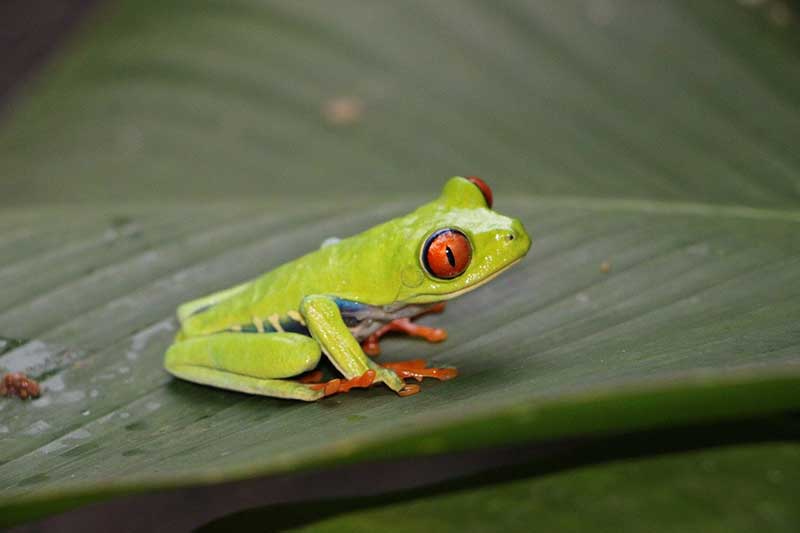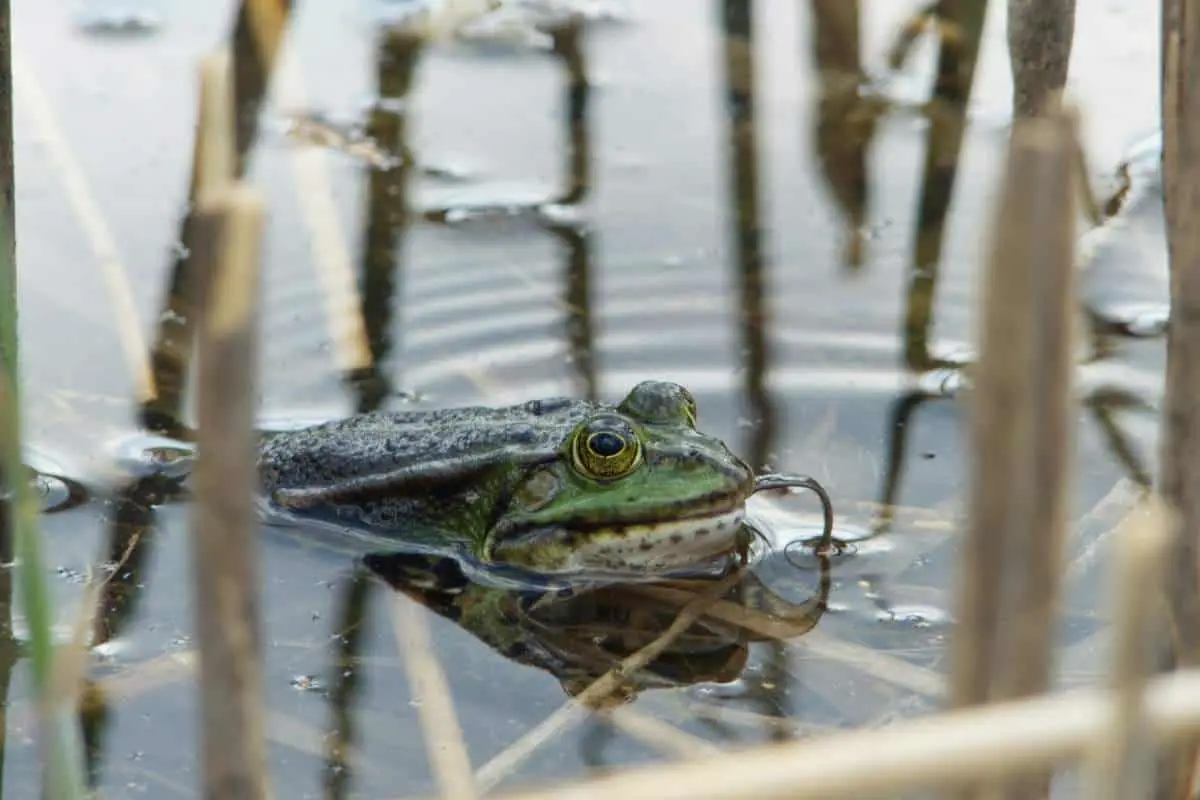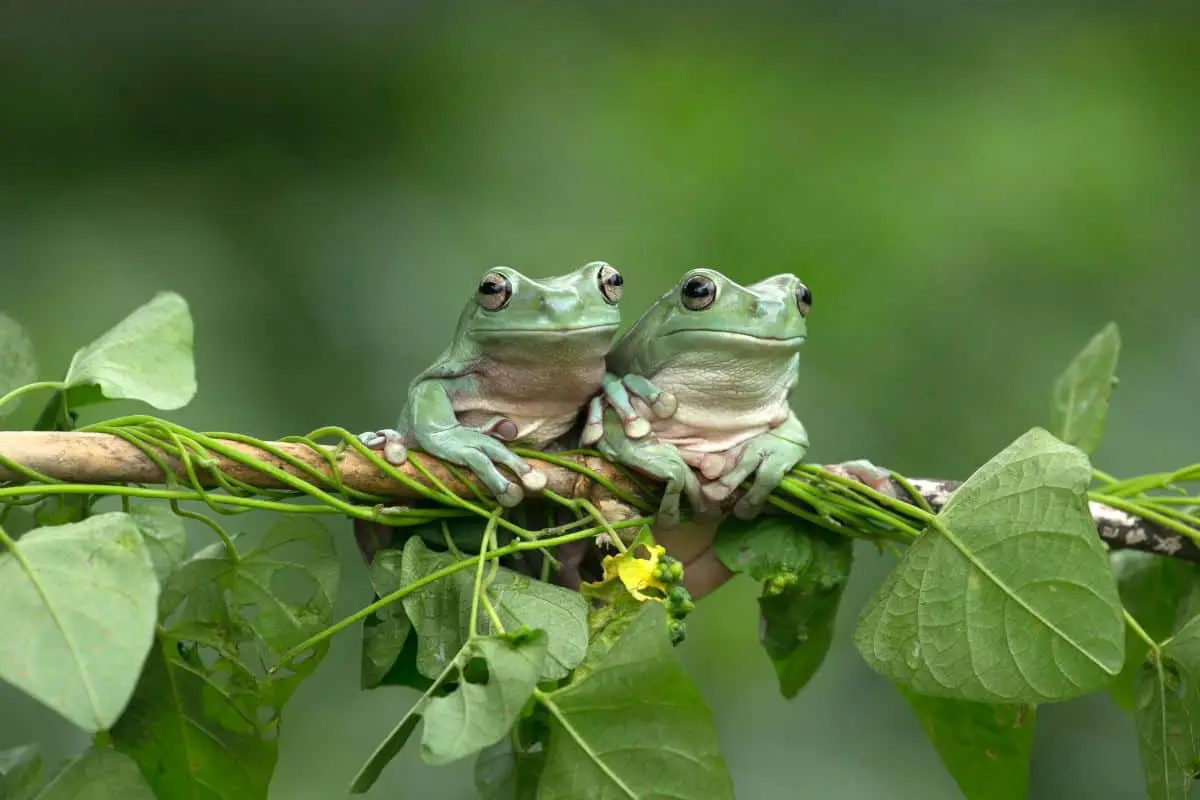Frogs are famous for having big eyes. Almost all frogs are nocturnal, which is why they tend to have big eyes in the first place. Still, when compared with overall body size, frogs may have the biggest eyes of any vertebrate.
Interestingly, frogs were some of the first vertebrates to develop eyes in the first place, which makes their vision a subject of great interest to biologists. Of course, not all frogs have big eyes. Some species, especially the fully aquatic ones, actually have pretty small ones. Here are some of the frogs with the biggest eyes.
Frogs with Big Eyes
1. Red-eyed Tree Frog
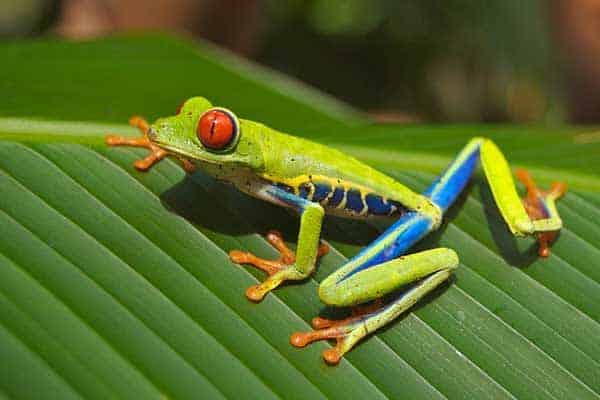
Scientific name: Agalychnis callidryas
This species is famous for it’s huge, bright red eyes, which are made to look even larger by it’s slender body. It inhabits tropical rainforests in Central America, where it spends its entire life up in the trees.
They’re nocturnal, and during the day they can be almost impossible to spot. That’s because they carefully position themselves to hide the blue stripes on their sides, and close their eyes, so only green skin is exposed. This way they blend in almost perfectly with their surroundings.
Females lay their eggs on leaves hanging over small puddles or ponds. Once all the eggs are laid, they fold the leaf closed and glue it together to protect them. When the tadpoles hatch, they fall straight into the water.
2. Cameroon Forest Tree Frog
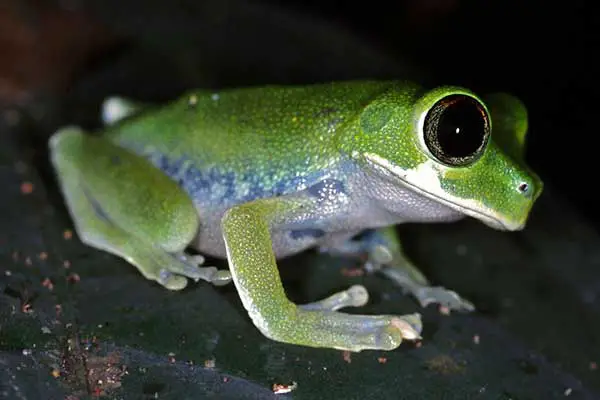
Scientific name: Leptopelis brevirostris
Native to the rainforests of Western and Central Africa, the cameroon forest tree frog, another species of big-eyed frog, resides in trees but typically stays close to the ground rather than venturing high into the canopy. Sporting a light green color and possessing huge, brown eyes, this species stands out in its arboreal habitat.
While most frogs like to eat insects, the Cameroon Forest Tree Frog is a specialized snail eater, and they eat almost nothing else. While they’re a very common species right now, researchers believe that agricultural development is becoming a major threat to their population.
3. Big-eyed Tree Frog
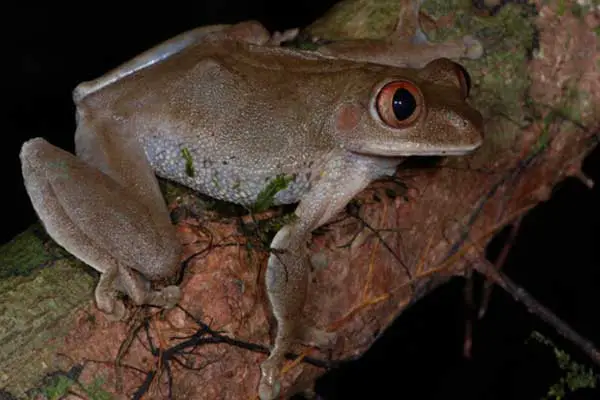
Scientific Name: Leptopelis macrotis
This frog is native to West Africa, where it likes to live in rainforests at high elevations, and is most often found in the trees lining river and stream banks. They live fairly high up in the canopy, often 30 feet or more above the ground.
They’re relatively large frogs with a dull brownish olive color. Their large eyes have big, vertically slit pupils and orange-brown irises. Because they require pristine, undisturbed rainforest for habitat, the population is seriously threatened by logging and agricultural expansion.
4. American Bullfrog
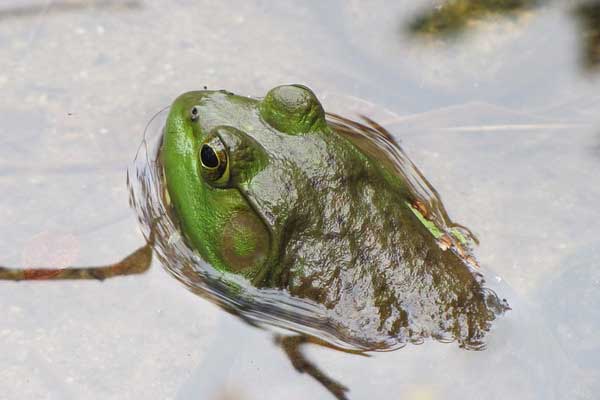
Scientific Name: Lithobates catesbeianus
Compared to a lot of the other frogs on this list, a bullfrog’s eyes are nothing special. Of course, bullfrogs are big enough that their eyes may actually be significantly larger than those on a tree frog, even if they look proportionally smaller. This is a big, beefy frog and it’s hard to realize just how big their eyes are until you see them in the water. Bullfrogs like to sit in the water with just their eyes above the surface- see one like that and you’ll realize they’ve got huge eyes.
Bullfrogs are common in most of North America, even though they’re hunted for food. These big voracious frogs will eat anything from insects to other frogs to rats and mice.
5. Waxy Monkey Tree Frog
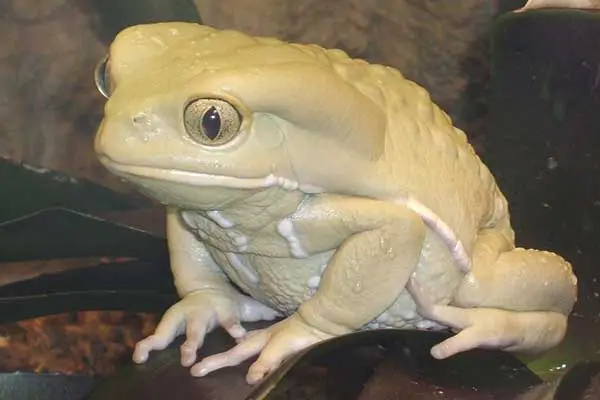
Scientific name: Phyllomedusa sauvagii
This unique frog lives in Argentina, Bolivia, Brazil and Paraguay. They get their name from the waxy secretions they produce to minimize water loss through their skin during the day. This allows them to live in drier environments than most frogs, and also gives them a limited ability to regulate their body temperature through evaporation, enabling them to live in hotter climates than most frogs.
They have slender bodies, but their heads look disproportionally large thanks to the glands which secrete that coating. Like most tree frogs, they have huge eyes which enable them to see at night.
6. Glass Frog
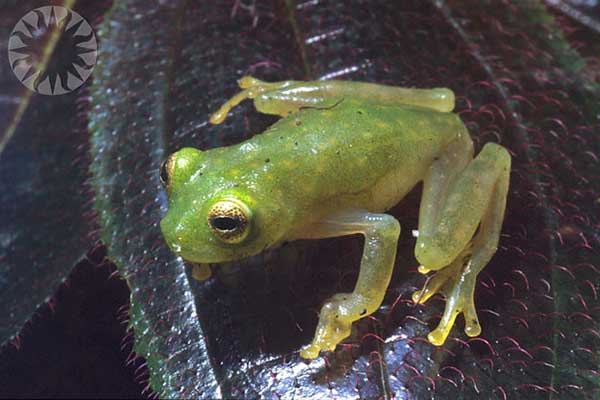
Scientific name: Centrolenidae
This is actually a whole family of frog species, many of which are poorly known, native to the rainforests of South America. Most species are lime green on their backs, but they get their name from their translucent bellies. You can actually see their internal organs through their skin when you turn them upside down.
They’re very small frogs that live high up in the trees, deep in the rainforest. They only come down to mate, and then return immediately to the safety of the trees. Because they’re mainly nocturnal, they need their big eyes to help them see in the dark.
7. Orange-eyed Tree Frog
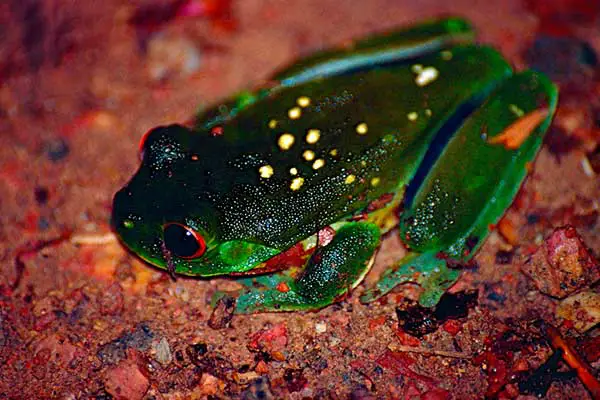
Scientific name: Ranoidea chloris
This frog looks remarkably similar to the red-eyed tree frog, but they aren’t closely related at all. This species is native to the coastal jungles of eastern Australia. It’s body is slender, though not as slender as the red-eyed tree frog’s, and bright green. The eyes, which have horizontal pupil slits, are a deep orange color and the belly is yellow.
This species is a popular pet in Australia. It can reach about 2.5 inches long, making a medium sized frog.
8. Gaboon Forest Tree Frog
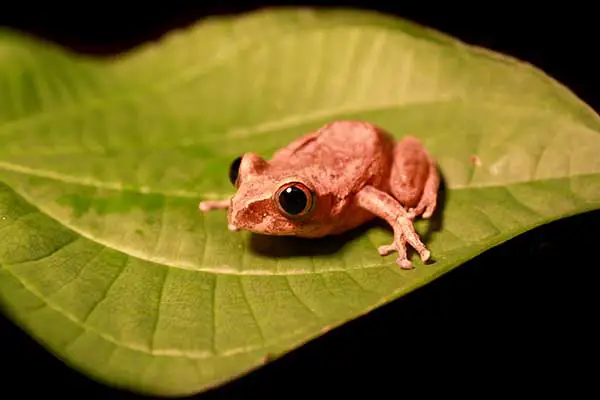
Scientific name: Leptopelis aubryi
Found throughout most of western Africa, this small frog with big eyes boasts truly enormous eyes compared to its body size. Each eye is close to half the size of the rest of its head! A large female will just barely exceed 2 inches, and most males are significantly smaller.
They’re a uniform brown color which can help camouflage them in the rainforest. Unlike most frogs, this species digs a nest in mud to lay its eggs in. While they prefer rainforest, they can be found in a wide variety of habitats, including land that’s been cleared of trees for farming. That makes them one of the only west African tree frogs that isn’t threatened by agricultural expansion.
9. Peacock Tree Frog
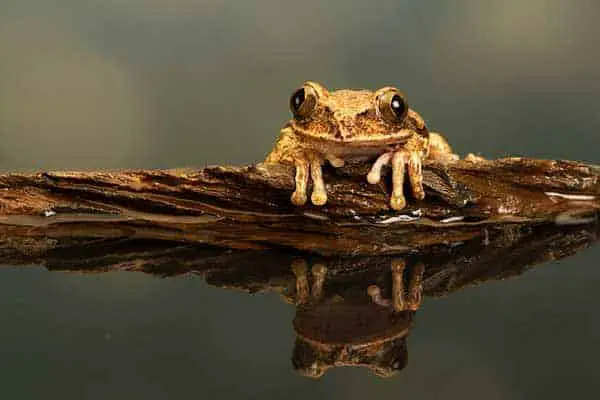
Scientific name: Leptopelis vermiculatus
Native to the forests of Tanzania, this species is named for its bright, iridescent colors. They come in two different color phases, though, and one of them is simply a dull, mottled brown. It’s the other color phase that earned the name- that one has bright green back with black speckles, and the sides and belly are marbled black and white.
They inhabit high-altitude rainforests in Tanzania, where their huge eyes enable them to hunt insects in the darkness under the trees.
10. Kivu Tree Frog
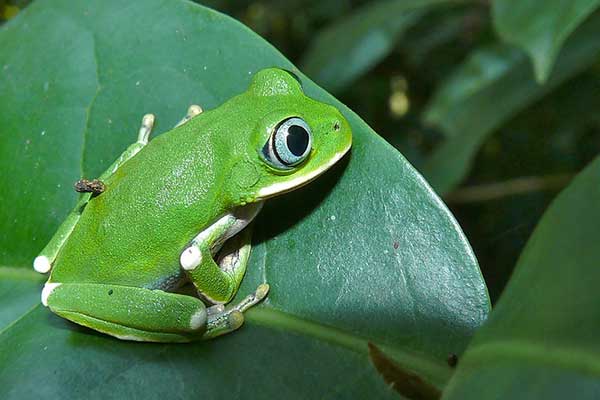
Scientific name: Leptopelis kivuensis
Found in the highland forests of Central Africa, this tiny frog is bright green with white undersides and big, blue eyes. Some adults may have a reddish or tan color on their backs, as well. They breed in flooded swamp forests, and lay their eggs in nests buried in the mud.
When seasonal rains come they wash the eggs out of the nests, which is what prompts the tadpoles to hatch. Habitat loss does pose something of a threat to this species, but much of their range lies within National Parks, which mitigates the threat to a degree.
